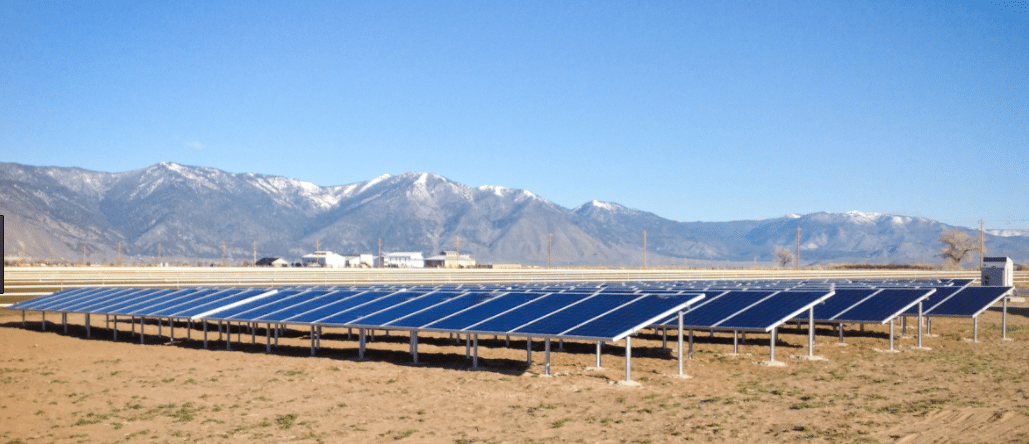The Gemini Solar project has been delayed after The U.S. Bureau of Land Management (BLM) missed the date to decide of the project’s Section 106 permit, which evaluates the project’s historic impact. That permit was supposed to be given in March, and now the 690 MW proposed giant is on hold. The hangup is over the project’s visual impact on a historic railroad camp on the Moapa River Indian Reservation. BLM has now shared that the organization can no longer give a timeframe for a decision. Source: WHTC
NextEnergy Capital has acquired a 100MW portfolio of community solar projects in New York. All of the projects are set to be completed in the next 18 months , and brings the fund’s total capacity in operation or under construction across five projects to 285MW. Source: renews.biz
250 MW have been proposed for the New York Town of Verona, set to be developed by Invenergy. Verona Solar, LLC has filed a public involvement program plan for a 250 MW solar project to be located on up to 1,750 acres in the town. The arrays would be scattered over that 1,750 acre area, rather than being a centralized, monolithic, installation. A preliminary scoping statement must be filed with the state by May 21 for the project to keep moving forward. Source: Rome Sentinel
Duke wants to double up on annual solar rebate deadlines. Citing company servers being overwhelmed with a surge of applications on Jan. 2, Duke Energy has asked North Carolina regulators for permission to take solar rebate applications twice a year, instead of once. If approved, Duke would accept rebates in January and July. You can check out Duke’s filing here. Source: WFAE
Maryland makes interconnection easier: Maryland adopted updated rules for connecting distributed energy resources to the electric grid this week, with the biggest benefits coming to storage and inverters. The new rules now require that energy storage systems be evaluated based on “net system capacity” and as defined by the “proposed use,” done to ensure that a project’s evaluation is based on its actual design and intended use. On January 1, 2022, the rules require that utilities establish default utility required smart inverter setting profiles. This requirement sets Maryland on a path to integrate smart inverters further into their interconnection standard. Source: Solar Builder Mag
This content is protected by copyright and may not be reused. If you want to cooperate with us and would like to reuse some of our content, please contact: editors@pv-magazine.com.









“That permit was supposed to be given in March, and now the 690 MW proposed giant is on hold. The hangup is over the project’s visual impact on a historic railroad camp on the Moapa River Indian Reservation. BLM has now shared that the organization can no longer give a timeframe for a decision. Source: WHTC”
The hangup is the Moapa River Indian tribe has probably NOT been offered a generous land lease, PPA or other monetary program to grease the wheels of “acceptance”.
During the “big push” for solar PV in California from around 2003 to 2010, Many solar projects were determined and scoped out in Riverside County. Solar Heat using “power towers” were slapped down early on for “environmental reasons”. Solar PV became the anointed choice. One of the largest projects the McCoy wash solar PV project was to be built out in phases. Phase one a 250MWp plant was constructed then the three IOUs SCE, PG&E and SDG&E balked at signing a PPA for 1GW of generation. During the 2010 year, there was enough solar PV and wind generation online there were several days during the year where power had to be “dumped” to other States and at night fueled generation on the spot market was used to keep the grid stable. CAISO ‘now’ says “curtail” overgeneration of solar PV and wind generation and use fueled generation to ramp around grid demands. Large scale solar PV is NOT necessarily a “profitable” energy source when one “clings” to the fueled dispatchable energy model. IF the “powers that be” decide to go back to the McCoy solar PV project and install a giga watt or two of energy storage, then SCE, PG&E and SDG&E would be interested in signing a long term PPA of 1GW of dispatchable or less energy on demand. It would be a remote site like this one which would be amenable to try out the large footprint but very large scale energy storage of using redox flow batteries to store the overgeneration of power when not needed and shift that time to when the power is needed. Using the four “corners” of the entire site size for 50 acre redox energy storage systems could create a 4GWh battery “block” that could provide power in 250MWh or less dispatched energy to the grid to service demands day or night.